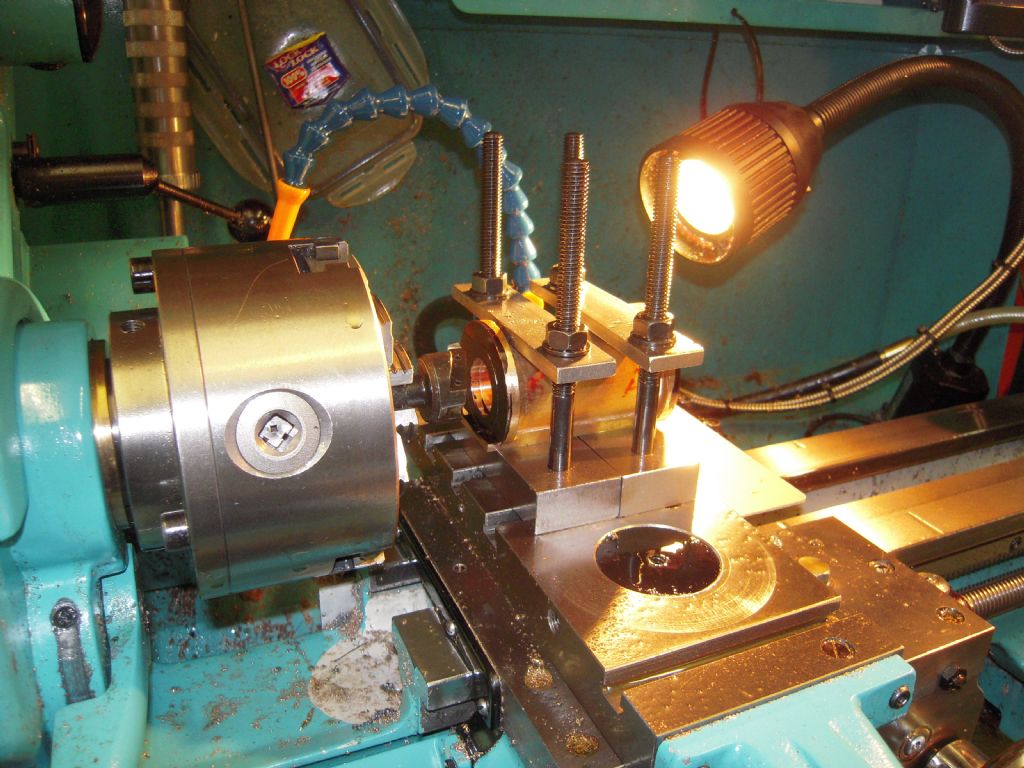Bad luck Michael.
More normally.
The travelling steady on a Boxford isn't suitable for a modern tool post. It can be used but it's positioned for lantern holders so access right up to the chuck can be tricky.
It's reckoned to be the most economical South Bend clone but in real terms the only one that is "better" is the S&B Sable mainly down to some proportions and heftier lead screws if I remember correctly.
The spindle doesn't project out of the back of the change wheel cover enough so when swarf is pushed out that way to avoid getting it in the chuck it can get on the change wheels. If these have been set correctly for quiet running the stud gear shaft may bend if the gear gets swarf on it.
Only some models have spindle locks for unscrewing chucks. This can lead to bull wheels loosing teeth.
Some spare parts have to be bought from John Ward. True of other older lathes as well.
They were popular with pro home turners for batch work. Read most peoples normal working hours. Tough life for any lathe. They would normally sell on when bed wear reached a point where the taper was too excessive to meet what they needed to be able to do. Headstock bearings too.
#############################
Any Chines lathe I have looked at – cross slide travel is always too short. That covers a lot. Also Wabeco 4000's.
The Wabeco saddle hand feed wheel size wise is a joke. It has the usual chuck fixings fouling problem but the spigot is a light drive fit into the chuck. The bolt heads can be used to lever it off with the same spanner so it's a good idea to use bolts to hold things in place. The spigot size is unique. The motor housing / cover prevents the saddle from going completely along the bed. This may hinder shallow face plate work without tool overhang.
Swarf will drop directly on the lead screw. The 4000 isn't supplied with a lead screw cover.
It uses 2 T slots at the edge of a thin saddle. Often these saddles can tend to distort and jam up if they are used to hold things down. They also hold the compound slide down and that has a lot of overhang as a result.
###########################
There is something really weird about Viceroy head stock bearings. In one case, lathe not owned by me they wouldn't stay in adjustment. This one was near new. Bought new actually at a college. In the one I owned they just wouldn't adjust. These too can finish up being used by home turners, Mine had wear on the V's up by the head = 0.010 taper mostly due to that over circa 4" or so.
############################
Early Chinese 3 in 1. Nice finish turning, noisy gears, oil leaks and the worst general alignment I have ever come across even down to the hand scraped tail stock. Also not possible to turn up to a centre as the centre distance had been increased by 2" by removing the tail stock nose. A number of Chinese lathes have had this problem. Some may still have.
############################
Hobymat. Not bad as small lathes go. Pretty good really and can do accurate work. Dog clutch needed a file running over it after any serious amount of screw cutting. Often messed up by miss use of the push pull bolts used to set the saddle fit. This was the screw cutting Hobymat. They now do 2 models. Going on next owner ones that use a tool post where tools are clamped directly onto the top of the compound over pressure can crack the compound slide casting.
############################
Unimat. Fine for what it is. Pass on the model with 2 round rails. I just changed the bearings. They need that from time to time due to how they are used but the method works really well.
###########################
Peatol / Taig. An amazing amount of work can be done on these if fully kitted out. Very accurate too even for roundness but eventually the head may bend spoiling it's alignment. It did on mine but perhaps I asked too much of it really. 6" diameter aluminium with the riser block on din't cause any problems. Fixing a cast iron pulley did. Turning one side of a V off and replacing it with a steel plate and recutting the side of the V. I've been told that this distortion will spoil the initial accuracy eventually what ever is done on them but bear in mind the initial accuracy is very high. They are also surprisingly rigid after a fashion so finish can be truly excellent.
I'd wonder about the motor they fit now. Mine had a normal AC motor. There was plenty of power available and a decent speed range.
John
–
Chris Evans 6.



 Part 2
Part 2

